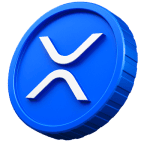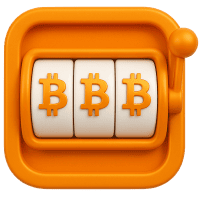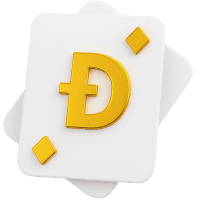Cryptocurrency derivatives exchange platforms’ve exploded since 2020 — and in 2025, they’re more high-powered than ever. The mentioned websites let trade any main assets: bitcoin derivatives, altcoin futures & options — with leverage, hedging, strategy tools.
But it’s difficult to pick the right one, having all the options. Crypto derivatives trading guide breaks down top websites, helping to obtain the best place to trade in 2025. No fluff, just real comparison so you can trade smarter — and maybe even laugh at outrageous pump-and-dumps.
Key Features to Compare
When you’re shopping for a derivative trading platform, these are the must-review features:
- Leverage range:
- High-leverage — up to 125x, sites attract thrill-seeking traders, but riskier.
- Lower-leverage platforms: 10x–20x, provide a safer route.
- Supported instruments:
Not all exchange crypto derivatives platforms support options — some stick to futures, perpetuals, or even exotic spreads.
- Margin modes:
Cross-margin allows one wallet to cover multiple trades; isolated margin contains risk in individual positions.
- Order types & risk controls:
Look for stop-loss, take-profit, trailing stops, algorithmic entries to suit various crypto derivatives trading master plans.
- Funding and settlement cycles:
Perpetuals may involve funding every 8 hours; quarterly bitcoin derivatives contracts settle on schedule. You should know when and how frequently.
- Liquidity & slippage:
Bigger platforms like Binance and OKX have deep order books, keeping your trades tight. Smaller platforms may show wide spreads.
Fees & Leverage Comparison
If comparing crypto derivatives platforms, fees & leverage make all the difference — principally for active traders. Here is the main derivatives trading platforms breakdown in 2025. And info how to compete on core metrics like maker / taker fees, maximum leverage, regulatory appeal:
| Exchange | Max Leverage | Maker Fee | Taker Fee |
| Binance | up to 125x | 0.02% | 0.04% |
| Bybit | up to 100x | 0.01% | 0.06% |
| OKX | up to 50x | 0.02% | 0.05% |
| Coinbase Derivatives | up to 20x | 0.05% | 0.10% |
Binance still dominates the crypto derivatives market, offering ultra-high leverage and one of the deepest liquidity pools on any crypto derivatives exchange. It’s often considered the best crypto derivatives exchange for high-frequency trading, though KYC and regional limits apply.
Bybit suggests better incentives for market makers, making it popular among volume traders seeking tighter spreads. Coinbase derivatives exchange, while conservative on leverage, shines with compliance — it’s one of the few crypto derivatives exchanges US users can trust for legal clarity and security. Each platform brings special strengths to the crypto derivatives trading table, if you prioritize ultra-fast execution or regulatory peace of mind.
Security & Regulation Status
Valid security isn’t just a perk in the galaxy of crypto derivatives trading — it’s a must. Let’s break it down by platform so you know where your funds are safest.
- Binance: the biggest crypto derivatives exchange by volume. It uses Proof of Reserves, real-time liquidation engines, and auto-deleveraging tools. Around 97% of benefits are kept in cold wallets, and it maintains a user protection insurance fund — SAFU, currently holding over $1B. However, Binance is under ongoing scrutiny by U.S. regulators, and isn’t fully licensed for crypto derivatives exchange US customers.
- Bybit: no big hacks to date. All user benefits are kept in multi-sig cold wallets, with daily fund reconciliations. It offers an insurance fund for liquidations and publishes wallet proofs via Merkle Tree audits. It lacks licensing in most jurisdictions and is not a legal option for U.S. traders.
- OKX is licensed in Malta and Labuan. OKX undergoes regular third-party security audits, stores 98% of benefits in cold storage, and provides a dedicated derivatives risk dashboard. The derivatives trading platform implemented anti-manipulation features & layered KYC protections as well.
- Coinbase Derivatives Exchange: fully regulated in the U.S., with oversight from the CFTC. Fiat funds are FDIC-insured up to $250,000, and the platform meets SOC 2 Type II standards. It’s the only cryptocurrency derivatives trading platform legally accessible to U.S. residents with full compliance.
- Other platforms: Bitget, KuCoin, and MEXC, provide crypto derivatives trading but lack comprehensive regulation or audit transparency. Use with caution if you’re holding large positions or based in restricted regions.
Trading Tools & Platform Experience
When it comes to derivatives trading software, flashy design isn’t enough — what traders really need is speed, reliability, and pro-grade tools. Here’s how the major crypto derivatives exchanges stack up:
- Binance: a full-featured crypto derivatives platform with grid trading, ladder orders, trailing stop instruments, multi-chart view, built-in trading bots. The platform supports REST & WebSocket APIs, syncs across desktop, mobile, web. It boasts a sleek UI that feels made for professionals. Binance’s mobile app is one of the most responsive in the market.
- OKX: offers everything Binance does, plus a built-in strategy builder for automating trades without coding. Their crypto derivatives trading interface includes integrated analytics, live PnL display, and quick margin adjustments. The exchange offers multi-device sync and dark mode by default.
- Bybit: known for its ultra-fast API performance — a favorite for quants and bot traders. It offers custom-built automation, smart TP/SL settings, and real-time risk alerts. Its UI feels smoother than OKX’s, especially on mobile, where Bybit consistently ranks high for trading responsiveness.
- Coinbase Derivatives Exchange: far simpler. It skips advanced visualizations and instead emphasizes clean execution and low-latency order routing. While not built for power users, it’s ideal for U.S.-based traders who value security over bells and whistles. It supports basic derivatives trading tools & crypto derivatives exchange API entry, but lacks native bot support or grid systems.
All four platforms support automated trading through REST/WebSocket, but only Binance & Bybit suggest full bot integration out of the box. If you’re choosing a derivative trading platform for speed & customization, Binance and Bybit take the crown — but Coinbase wins for simplicity and compliance.
Future Trends in Crypto Derivatives
Looking ahead, we expect:
- More Advanced Options: expect splits, calendar spreads, weekly expiries, options vaults.
- On-Chain Settlement: platforms like dYdX are leading blockchain-native crypto derivatives trading, removing counterparty risk.
- Regulated U.S. Products: expect the first ETFs & regulated derivatives tied to Bitcoin futures.
- Institution-Grade Tools: API whitelisting, FIX protocol support, multi-account dashboards for professional crypto desks.
- Risk Management Automation: updated liquidation engines, streaming margin alerts, cross-collateral options.
Closure & Recommendations
Here’s the result for picking up a crypto derivatives platform in 2025:
- Binance remains the go-to — just accept the regulatory gray area for tight fees, deep liquidity, huge leverage.
- If you’re U.S.-based and prefer peace of mind, Coinbase Derivatives is the only fully regulated choice.
- Eager for a balanced option? Bybit offers excellent execution with reasonable fees and global availability.
- For skillful users managing complex positions or institutional needs, OKX offers strong tooling with regional regulation and safety layers.
Remember: trading crypto derivatives isn’t a casual hobby once leverage is assumed. Your choice of platform, access to tools, understanding of risk may define your success — or wipe your account.































